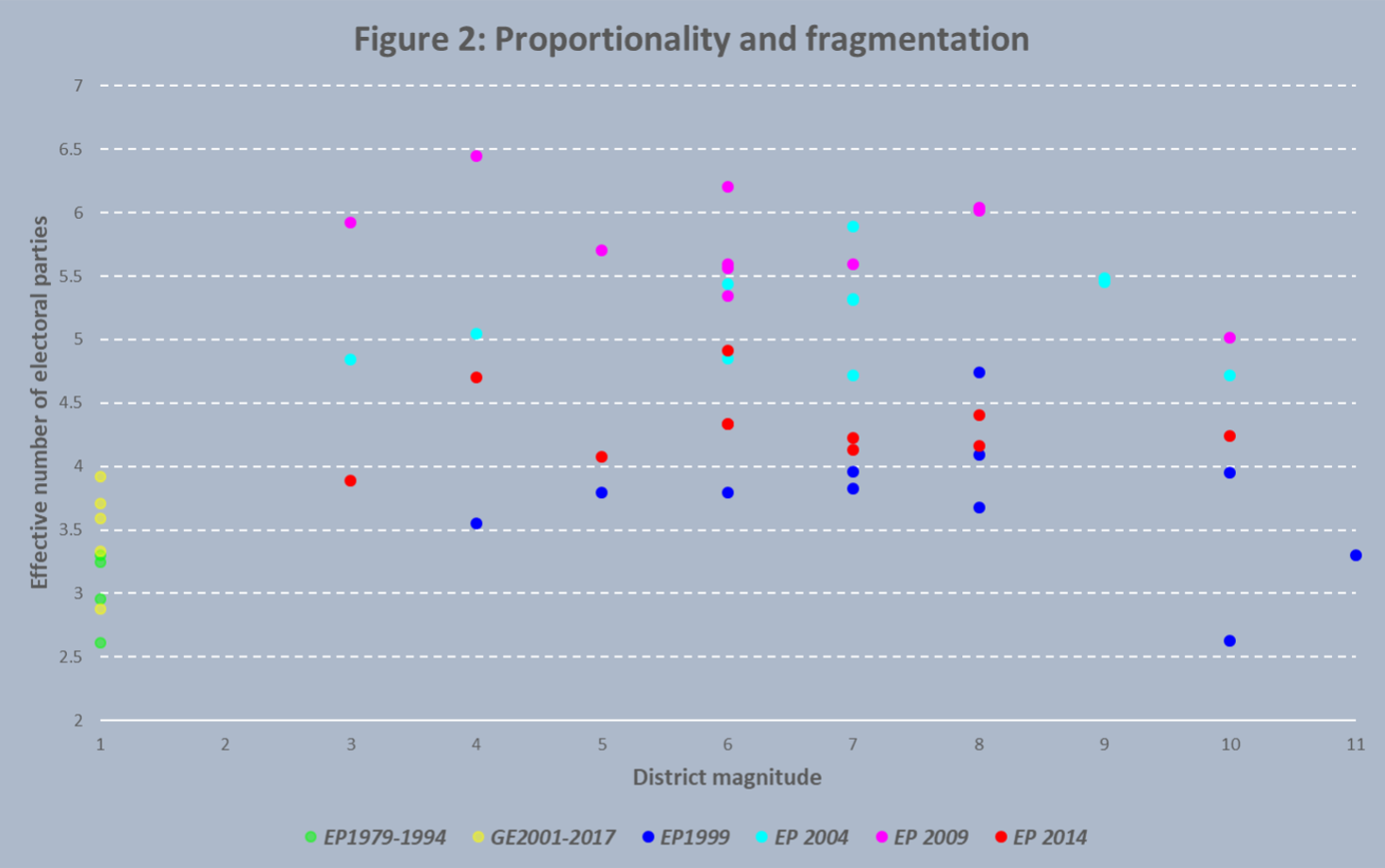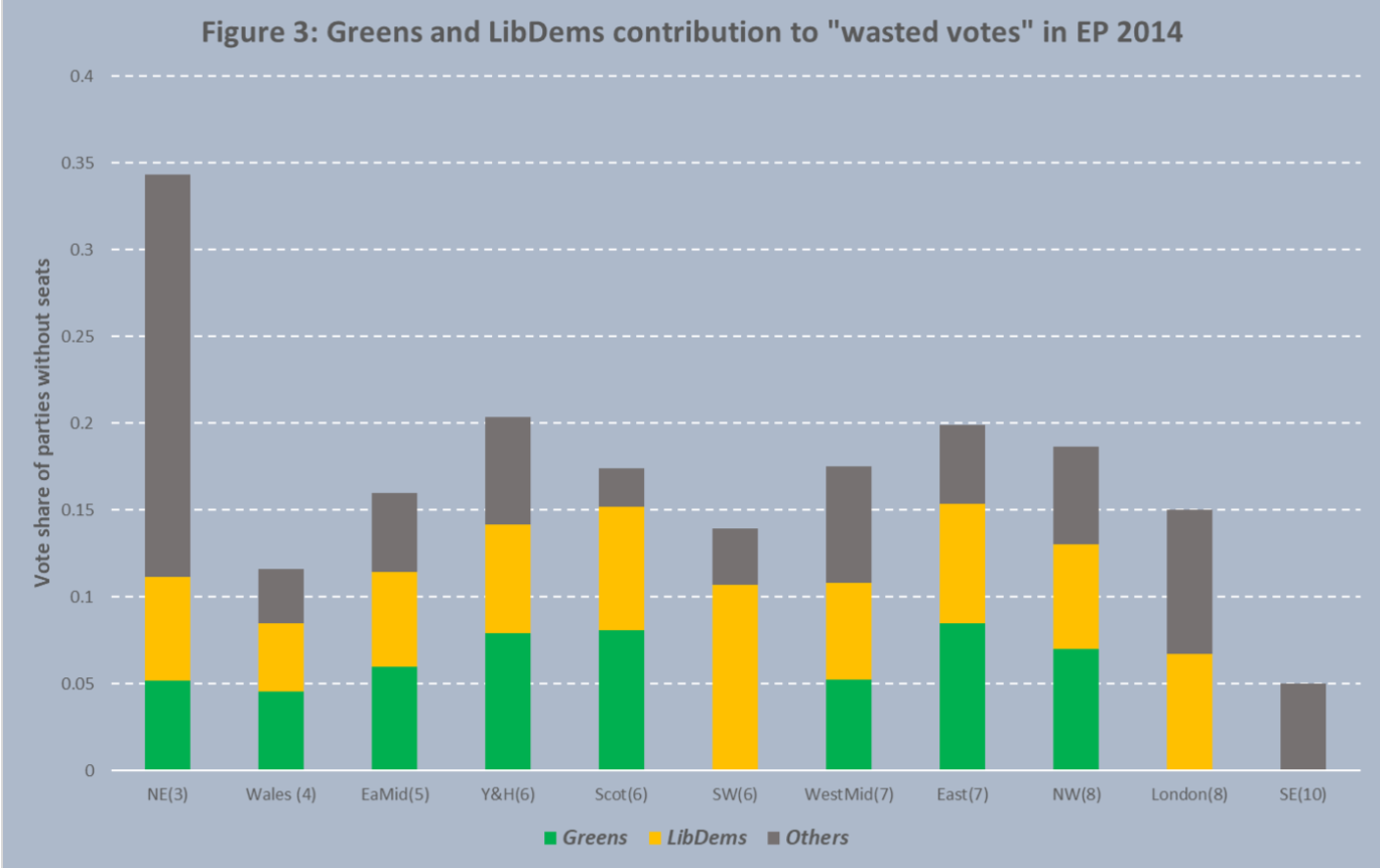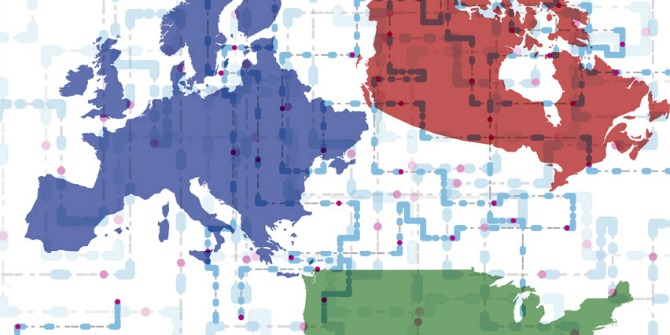 Heinz Brandenburg explains that due to the electoral system used in the European Parliament elections, and in the absence of any coordination between the relevant parties, pro-Remain voters are facing a tricky task when looking for ways to vote tactically. Importantly, they would be ill-advised to apply identical tactics across the various regions.
Heinz Brandenburg explains that due to the electoral system used in the European Parliament elections, and in the absence of any coordination between the relevant parties, pro-Remain voters are facing a tricky task when looking for ways to vote tactically. Importantly, they would be ill-advised to apply identical tactics across the various regions.
The European Parliament (EP) Elections in the UK on 23 May will be different from any previous ones, and not just because they were not supposed to take place at all. In contrast to previous EP elections, these are actually generating interest – because of Brexit, the Brexit Party, the multitude of “Remain” parties, the expected punishment for both the governing and the main opposition party, and plenty of other sub-plots.
What they are also generating is a sudden interest in how EP elections are actually conducted, and how votes are translated into seats. This is primarily because three Remain parties are contesting these elections separately and competing with each other (Liberal Democrats, Greens, Change UK/The Independent Group). So, while the Brexit Party appears to be attracting most of the hard Brexit vote, the pro-Remain vote – which is probably equally big – could be split three ways, or even four, given that some Remainers may stick with Labour despite their equivocation around a second referendum question.
So far, at best, people may have been aware that in EP elections a proportional system is used, and not the first-past-the-post (FPTP) system as in general elections. Because of this, we suddenly hear the name d’Hondt bandied about in the British media. D’Hondt is one of the available methods of allocating seats in multi-member districts, and is the method in use for the European elections in the eleven electoral regions of Great Britain (not in Northern Ireland).
Table 1 illustrates how d’Hondt works, with the example of South West England, a six-seater electoral region in the 2014 EP election: each party’s total votes are listed in the first row, while the further rows display votes divided by two, three, four and so on. After identifying the six highest numbers in the spreadsheet, each gets a seat allocated. Note from the example that the Liberal Democrats, even though their vote share was not far off the Greens, would not have won a seat if seven had been on offer, as UKIP would have edged them to win their third seat.
But d’Hondt is not really what creates disproportionality – that is instead brought about by relatively small district magnitudes. The term district magnitude describes the number of seats in an electoral district. In FPTP, district magnitude is one and results are least proportional. The eleven EP election regions in Great Britain allocate between three and ten seats, which means district magnitude ranges between three and ten. And that is where things become disproportional. If Britain used the same system as, for example, Germany, with no subdivision into regions, just allocating its 70 seats according to national vote shares, the d’Hondt system would create an almost perfectly proportional outcome. And the important point is that EP elections in the Britain not only use a somewhat disproportional system, but that the system is differently disproportional across British regions.
With decreasing district magnitude, electoral thresholds emerge – i.e. parties need to win an increasing share of votes in order to convert these into at least one seat. Figure 1 reports how over the past four EP elections, since PR was introduced in 1999, required vote shares vary across electoral regions, depending on the number of seats on offer. Competing in North East England (three seats), a party typically needs to win over 15% of the votes to convert into one seat and over 30% to win two seats. Whereas in South East England (ten seats), 8% tends to be easily enough to win a seat, 15% sufficient to win two.
Note: Data points show the lowest vote share ever recorded for a party winning one (black dots) or two seats (blue dots) across EP elections 1999-2014, and the highest ever vote share recorded for a party that failed to win a seat (red dots) or failed to win more than one seat (pink dots). The added yellow line shows the effective threshold by district magnitude as proposed by Arend Lijphart (eff thresh = 75% [m+1]), illustrating the fit with empirical data from EP elections in the UK.
This means that parties face vastly different competitive situations across electoral regions, and also voters face different situations – lower district magnitude would require more tactical voting in order to make votes count. However, given the low salience of EP elections and knowledge about them, British voters have shown no signs of adapting to the varying electoral contexts. This is illustrated in Figure 2 which reports how fragmented election results were across regions with varying district magnitude. It uses the measure of “effective number of electoral parties” which helps to measure fragmentation of the party system. Basically, if half of the voters vote for party A and the other half for party B, we have a perfect two-party system (ENEP=2), whereas if five different parties receive the votes of a fifth of the electorate each, we would have a perfect five-party system (ENEP=5). Figure 2 shows that fragmentation varies systematically between EP elections but does not respond to changing district magnitude.
For comparison, I added ENEP scores for the EP elections before 1999 when FPTP was still used, as well as for general elections after 1999 – on the left side, at district magnitude of 1. (These are obviously not directly comparable, as ENEP in earlier EP and later general elections are measured for the entire country, whereas those for EP 1999-2014 at the level of electoral regions. These are only meant for general comparison of how voting varies between FPTP and PR elections.) Here we do see that voters behave differently under PR than under in FPTP – more votes go to smaller parties. But voters in EP elections behave as if elections were equally PR across all regions – voters in NE England or Wales are just as likely to choose from a wide range of parties as those in London or SE England, despite small parties having a much lower chance of gaining seats.
What happened in 2014 gives us some idea of the challenge faced by pro-Remain parties and voters in the upcoming EP elections: two of the three now competing pro-Remain parties, the Liberal Democrats and the Greens, suffered badly in 2014 from voters behaving almost identically across very different electoral contexts. Between them, the two parties won over 2.2 million votes (13.4%) but only four seats (5.5%). Three of their four seats were won in London and South East England where both parties polled close to their national average. The only exceptional performance came in SW England, where both achieved over 10% – enough for the Greens to win a seat but not the Liberal Democrats.
In total, two-thirds of their 2.2 million votes were “wasted”, in the sense of being cast in regions where no seats were won. In total, Liberal Democrats and Greens contributed 1.5m or 62% of all “wasted votes” across Britain (see Figure 3). However, only in the three regions with the smallest district magnitude (NE England, Wales and East Midlands) was their combined vote share below the effective threshold.
For the current contest, a recent FT analysis of regional breakdowns projects the three English pro-Remain parties to convert their combined 27% or so into only nine seats (12.8%), while the Brexit Party is looking at converting just under 30% of votes into 29 seats (41.4%). The latter is doing so well because it polls at well over 30% everywhere outside Scotland, Wales and London and hence is on course to win multiple seats in all of those regions.
The general urge among pro-Remain voters is probably to agree on one of the pro-Remain parties at the expense of the two others, but however hard they may try, without party agreements and more central coordination this will remain quite haphazard. While an actual electoral pact might have maximised returns, some half-hearted concentration of votes in favour of one party would create sub-optimal outcomes in regions with low as well as in regions with high district magnitude.
Tactical voting will fail in NE England or Wales because any such haphazard effort will not be sufficient to get that one party over the required threshold of 15% or more. It could be most successful across regions with district magnitude of 5-7, if it helps getting at least one party over the threshold of 10-12%. However, in London, NW England or SE England (with eight or more seats), it could actually reduce the overall number of seats the three pro-Remain parties could win between them. If, for example, tactical voting pushes one pro-Remain party close to 15% but reduces the two others to 5 or 6%, the bigger party will not have enough to win multiple seats (look again at Figure 1 and the threshold for winning more than one seat) while the others could both fail to win a single seat. That could reduce the pro-Remain parties to a single seat where three could have been won.
Where the effective threshold is well below 10% (London, SE England, NW England), the best outcome for pro-Remain parties would actually be for the vote to be as evenly split between them as possible.
_____________
Note: the above was first published on LSE Brexit.
 Heinz Brandenburg is Senior Lecturer in Politics at the University of Strathclyde.
Heinz Brandenburg is Senior Lecturer in Politics at the University of Strathclyde.












Pro Brexit voting tactics don’t seem to covered as much or at all as Remain, or have I missed it?
Please advise asap
Thanks
Maz
More explanation required. Too opaque!
Let’s hope that your very informative article–for which thanks–alerts people to the fact that in Thursday’s election, the number of MEPs of any particular Party elected (whether in one’s region or across the nation) can hardly matter very much. The aggregate % of votes against the Brexit Party + Conservative Party + UKIParty will matter more.
Of course any voter would like to see the number of MEPs for a Party that represents them on the Brexit question to be maximized. But for most voters, the point of the election cannot be a matter of getting MEPs of a particular Party elected. Even where the Party is chosen because tactics seem to require it, in most regions, there won’t be enough tacticians to get that Party over the (eventual) line. If one is opposed to BP, CP, UKIP, then can’t one vote for the Party among the others that one likes the most, never mind what tactics might seem to require?
VOTE one should. It has to be bad if anyone fails to vote because they’re unclear what tactical voting requires of them.